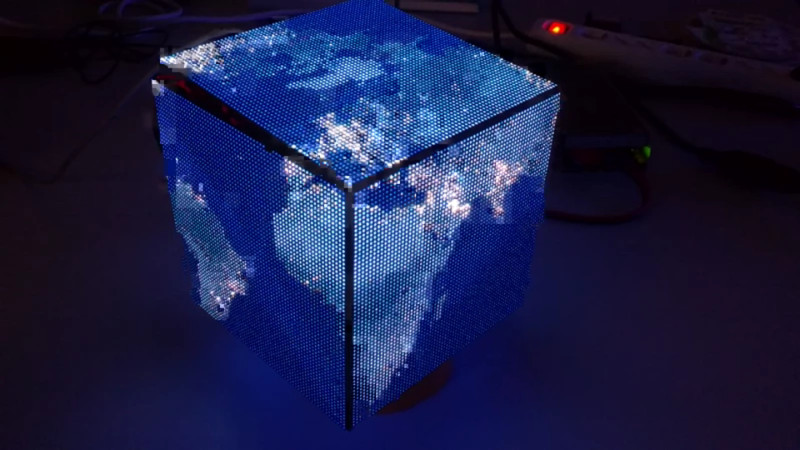Back in February at the Hacker Hotel camp in the Netherlands, among the many pieces of work around the venue was a rather attractive LED cube. Very pretty, but LED cubes have been done many times before.
If a casual attendee had taken the time to ask though, they might have found something a little more interesting, for while the cube in question might have had the same hardware as the others it certainy didn’t have the same software. [Polyfloyd] had equipped his LED cube with OpenGL shaders to map arbitrary images to the cube’s pixels in 3D space.
Hardware-wise it’s the same collection of AliExpress LED panels and Raspberry Pi driver board that the other cubes use, in this case mounted on a custom laser-cut frame. Driver software comes from an open-source library round which he’s put a wrapper allowing input through a UNIX pipe. This can take the RGB output of an OpenGL shader, of which he has created both 2D to 3D and spherical projection versions. The must-see demo is a global map of light pollution, and the result is a rather impressive piece of work.
If LED cubes are your thing, don’t forget this recent Hackaday Prize entry.
















What no video of it in action!!!
Did you follow the first link? A W E S O M E !
That projection of a spinning Earth onto the cube is epic.
The first picture in the article is a video. I had to right click and select show controls to watch it.
I still hear it drop on the ground.
I feel like there needs to be a bouncing Amiga ball demo mapped to this.
Cube? Boring. Icosahedron? Hmm. Now I just need to figure out how to make curved surface PCBs, so a sphere can be made out of triangular sections…
eye to pixel, not pixel to eye. (devious grins. cool ass project)